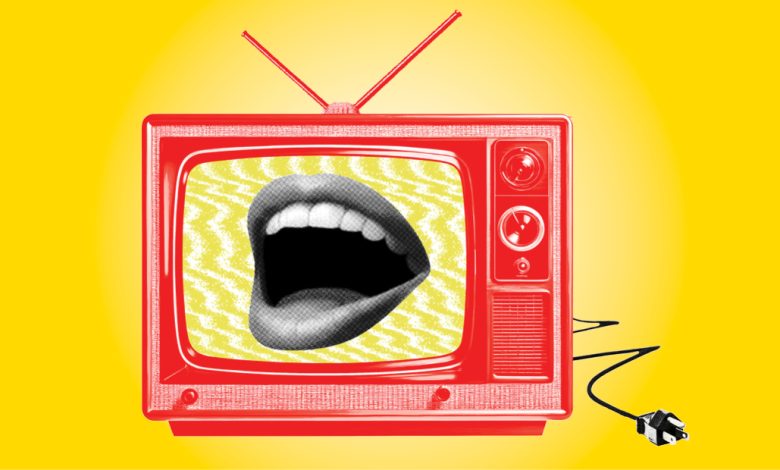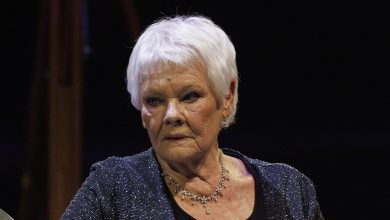Why the Laugh Track Won’t Die

When was the last time you spared a thought about sitcom laugh tracks? Probably years. Maybe decades? Sitcoms with background laughter have seemed almost dead, definitely and firmly dying, for a very long time. And, yet, like the plague-struck villager in Monty Python and the Holy Grail, the format keeps sitting back up as if to cheerfully say, complete with Cockney accent, “I’m not dead yet!”
One might look at laugh track sitcoms like an observing anthropologist: Here is the half-hour program with canned laughter in its natural broadcast habit, driven to near extinction since the 1990s by an invasive species, the single-camera comedy. Back in 2021, several outlets declared the format officially deceased when not a single new multi-cam sitcom debuted in the fall season and two acclaimed postmodernist shows (Disney+’s Wandavision and AMC’s Kevin Can F—k Himself) surgically dismantled the genre.
اRelated Posts:
And yet (puts on Morpheus glasses): What if I were to tell you, there are currently more multi-cam comedies with background laughter airing on broadcast than single cam (seven vs. five), and that many perform quite well? That after all critic bashing and evolving audience taste, there’s still a new Chuck Lorre sitcom this season (Georgie & Mandy’s First Marriage) in the broadcast Nielsen Top 5? That while most new streaming comedies are single cam, they often get trounced in the ratings by decades-old reruns of Friends and The Big Bang Theory?
Long been derided as tacky, commercial non-art, sitcoms with background laughter over the years have been condemned as a dystopian form of joke mind control. A study showed laugh tracks make viewers more likely to find jokes funny and triggers a mirror response — not unlike how seeing somebody yawn makes you want to yawn yourself (apologies if you’re now yawning; it’s never a writer’s goal). Laugh tracks have also been called a mechanism of systemic misogyny, where somebody (presumably an anonymous middle-aged white guy) slaps laughter over the repressive brutish antics of sitcom dad patriarchs (“To the moon Alice!” Ralph threatens Alice in The Honeymooners, fist raised, and cue the pre-recorded hoots).
In recent years, however, TV has evolved so radically, that there’s an argument to be made for appreciating the format anew in our current era of Peak Realism. FX’s “comedy” The Bear has broken Emmy records and is so real that every character is miserable (just like working in an actual restaurant). The most popular genre show at the moment is HBO’s The Last of Us, which takes a pulpy idea — zombie apocalypse — and creates a world so authentic that a likable character agonizingly dies nearly every week. While HBO’s breakout medical drama, The Pitt, is so true to life that you’re taught everything you never wanted to know about hospital staffing issues. Even a Disney Star Wars show, Andor, is taking its star war so seriously that a recent episode featured an Imperial officer attempting to rape a Rebel (calling it right now: The finale introduces an Ewok with cancer). All terrific shows, but TV — that ever-reliable escape from reality — now seems to revel in shoving reality right back at us (how many times in recent years have you read an interview where a showrunner throws around the word “grounded”?).
Laugh track sitcoms, meanwhile, with their intentionally unrealistic and ever-affable characters, sporting perfect hair in shadowless living rooms with disembodied Greek choruses of laughter floating about … arguably the format feels more artistic than ever because it’s so stylized compared to the grueling authenticity everywhere else. These shows are inherently weird, and weird goes hand in hand with art.
YouTubers have made videos that stripped away the laughter from shows like Friends and The Big Bang Theory to painfully awkward effect (“Without the laugh track, it looks like a bunch of people who really hate each other,” one commenter observed). But a comedy with audience laughter is its own unified thing which comes together in a package that can please. Hearing laughter feels warm, its tone is a sunny glow; a soft yellow noise. You’re not watching Jerry and Elaine by yourself, it’s like you’re watching them with a group of people. The empty awkward silence of seeing Jim and Pam on The Office, hits different, more cool and cold. The laugh track makes us feel less alone.
There is a creepy part of this. The original Laff Box used to add canned laughter to TV shows (yes, its name included a double ff “laff” and it was indeed an intricate box) contained 320 different laughs which were taped during the 1950s. This sacred sitcom Ark of the Covenant — stuffed with guffaws and chuckles and titters — was used for decades. Even modern sitcoms often used laughs recorded years or decades prior. You see where this is going (or perhaps not, it’s a morbid thought): Even after the Box retired sometime in the 1970s, the practice of taping laughs for eternal reuse continued. Instead of being “Filmed Before a Live Audience,” programs were often created with a partly dead audience. The Laff Box, and its more modern versions, had trapped their expressions of hilarity and stuffed them into a chuckle cube for endless recycling.
Speaking of: There is an industry distinction between using live studio audience laughter and entirely canned laughter (and also a middle ground, “sweetening,” which uses both — which is the most common tactic nowadays since even multi-cam shows have some scenes filmed outside). Filming before an audience is often considered superior as it helps actors improve their joke timing and producers tweak dialogue and give notes in real time based on the audience response for subsequent takes. There are also infectious Saturday Night Live-like moments when an actor visible struggles to stay in character when a joke is really working. In other words, a studio audience which provides a laugh track makes the show funnier as it’s being filmed. For our purposes, however, we lumped them together for a simple reason: The sound is the same. If you can’t tell the difference, then is there a difference? Aside from a percentage of the audience likely being dead, that is (sorry — too real?).
Source: Hollywoodreporter
HiCelebNews online magazine publishes interesting content every day in the TV section of the entertainment category. Follow us to read the latest news.
Related Posts
- Nate Bargatze Says Disney Head “Doesn’t Care About the Audience”
- Tom Ellis to Return for ‘Tell Me Lies’ Season 3, Teases “Dark, Toxic and Funny” Storylines
- Menendez Brothers’ Attorney Seeks Recusal of District Attorney From Resentencing, Citing Bias
- Dansby Swanson and Mallory Pugh’s Relationship: All About the Athletes’ Romance
- Shakira Explains Why She Almost Didn’t Release ‘Hips Don’t Lie’ as Hit Song Turns 20





